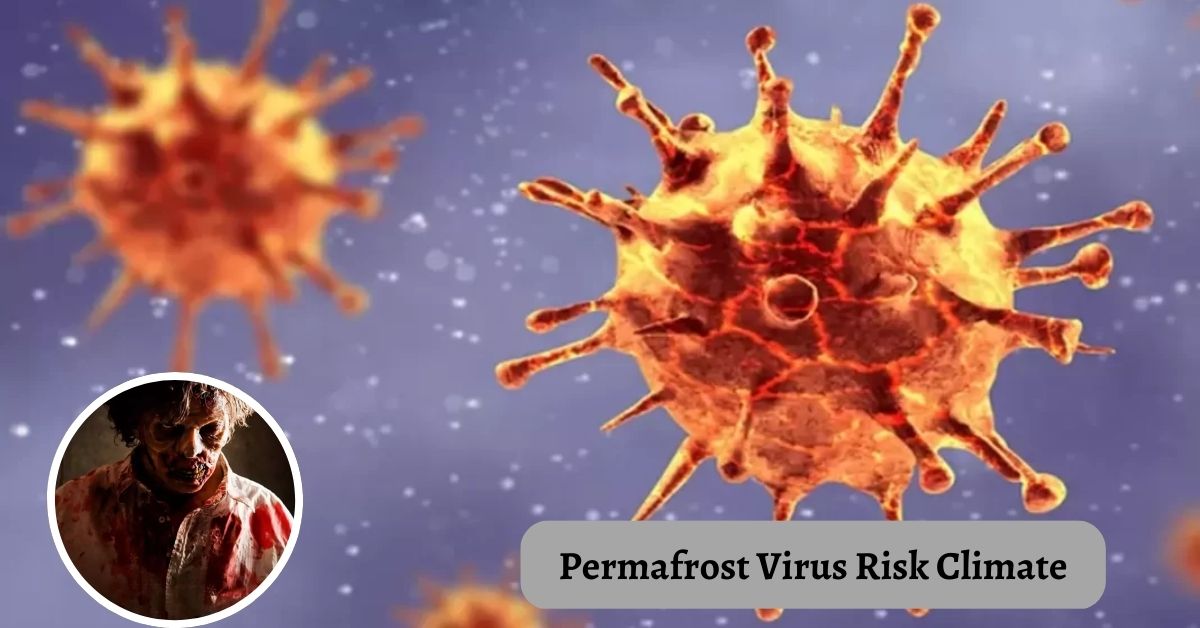The Arctic is seeing a permafrost melt as temperatures rise, which might release viruses that have been dormant for thousands of years but now pose a threat to both animal and human health.
While the idea of a pandemic caused by a disease from the past may sound like the storyline of a science fiction film, scientists warn that the risks are minimal but are underappreciated. It is also possible that chemical and radioactive waste from the Cold War, which might be harmful to species and disturb ecosystems, would be discharged during thaws.
The Arctic tundra and boreal forests of Alaska, Canada, and Russia have been supported by permafrost for aeons. Scientists have been able to excavate and analyze the mummified remains of several extinct creatures in recent years, including two cave lion cubs and a woolly rhino. This structure acts as a kind of time capsule, preserving not just ancient viruses but also the remnants of these animals.
This is the Virus Sniffer
Claverie has been researching a specific virus strain since he found it in 2003. Giant viruses are a great model for this kind of laboratory work since they are much larger than the ordinary kind and can be seen under a regular light microscope rather than a more powerful electron microscope.
A group of Russian scientists 2012 successfully resurrected a wildflower from 30,000-year-old seed tissue discovered in a squirrel’s burrow, inspiring him to try to find viruses frozen in permafrost.
By putting the virus into grown cells, he brought back to life a virus he and his team had recovered from the permafrost in 2014. To be on the safe side, he decided to research a virus that exclusively infected single-celled amoebas and not other organisms.
In 2015, he accomplished the same thing again by isolating a different strain of the amoeba-specific virus. Yet in his newest study, published on February 18 in the journal Viruses, Claverie and his team recovered various strains of ancient virus from multiple samples of permafrost taken from seven distinct areas across Siberia and showed that each strain could infect cultivate amoeba cells.
It’s clear that “many, many, many more infections” left their mark, he said. Now we have confirmation that they exist. Whether or not they are still alive is unknown. But, we reasoned that if amoeba viruses are still alive and able to infect their own hosts, then there is no reason to believe that the other viruses are not still alive as well.
You can also check out more articles like this:
- ‘We Are Struggling’ With Long-COVID, How Little We Know In 3 Years?
- Due to Xylazine New Flesh Eating Drug People are Becoming Zombies
An Infectious Disease That Has Already Spread to Humans
Preserved in permafrost are traces of viruses and bacteria that can infect people. Genomic DNA from the influenza strain that caused the 1918 pandemic was found in a lung sample from a lady whose body was unearthed in 1997 from permafrost in a town on the Seward Peninsula of Alaska.
The smallpox virus’s genetic traces were proven to be present in the mummified bones of a woman buried in Siberia 300 years ago in 2012.
Deeper permafrost thawing during exceptionally hot summers has also been linked to an anthrax outbreak in Siberia in 2016 that affected dozens of humans and more than 2,000 reindeer between July and August. This is because it allows old spores of Bacillus anthracis to resurface from old burial grounds or animal carcasses.
Better surveillance of the risk posed by possible pathogens in thawing permafrost is needed, according to Birgitta Evengrd, professor emerita in the Department of Clinical Microbiology at Umea University in Sweden, who cautioned against an alarmist approach.
“You must remember our immune system has been established in close touch with microbiological surroundings,” said Evengrd, who is a part of the CLINF Nordic Centre of Excellence, which studies how climate change affects the incidence of infectious diseases in humans and animals in the Arctic.
You can also read out related articles:
- WHO Partners With Cambodia To Address The Worrying Bird Flu Situation
- Who Claims that COVID Doc Anthony Fauci Doubled His Networth During Pandemic?
The Threat of a Pandemic
But, scientists have no idea how long these viruses may remain infectious under modern conditions or how probable it is that they would find a compatible host. Not all viruses cause sickness in humans; others are actually helpful. The Arctic may be home to 3.6 million people, but it is still a rather unpopulated region, so there is little chance of modern humans being exposed to viruses that have existed for a very long time.
Yet, Claverie warned that “the risk is sure to escalate in the context of global warming,” in which permafrost thawing would keep speeding and more people will populate the Arctic in the wake of industrial initiatives.
And Claverie isn’t the only one sounding the alarm that the area might become a hotspot for a spillover event, which is when a virus transfers to a new host and begins to spread.
They used a computer model to predict that as the temperature warms, the probability of viruses spreading to new hosts will increase in areas around the point where vast amounts of glacier meltwater flowed into the lake.
To know more updates relating to this you can join us on our Twitter account.
